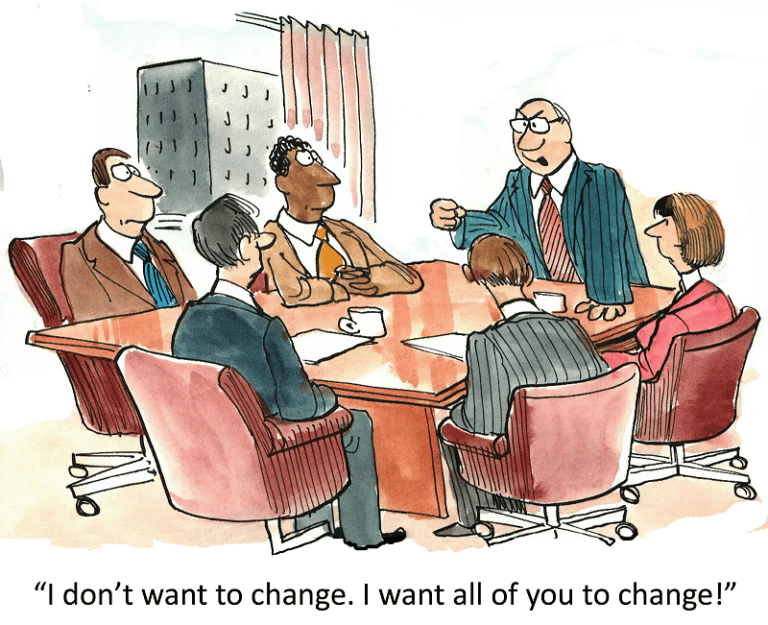Women Leaders and the Broken Rung
For five years, a report on Women in the Workplace has studied 590 major companies employing more than 22 million people. The latest of these reports by McKinsey & Company identifies a systemic failure in management processes which handicaps women throughout their working lives. Let’s start with some numbers.
The Good News
- The number of women holding “C-Suite” positions has increased 24% since 2015 when McKinsey’s reporting began.
- Fifty percent of participating companies reported an average of three women on their executive leadership teams, a 42% increase during the past five years.
Growth in the number of women occupying high-profile positions is crucial for working women as well as their business peers and entire communities. While actual study numbers reflect only a small, select group of working women, each added promotion symbolizes top-tier corporate achievement and increases the probability of a more level playing field in the future.
High-visibility women in top leadership positions can be examples of, and advocates for, greater inclusive workforce changes in their companies and industries. They are inspiring role models for younger women beginning their careers who are more likely to be attracted to businesses perceived as being more supportive of their future success.
The rapid rise in women holding top leadership positions during the past five years illustrates just how quickly levels of management could move toward greater diversity. Rates of increase are driven by certain conditions and a committed leadership team. These conditions include embracing diversity changes that are completely intentional, completely supported by senior management and incorporated into a company’s vision/mission statements. And diversity goals must align and support the key operating strategies of the business.
The Not-So-Good News
The rate of improvement in career paths for women at all other levels of management moved much more slowly from 2015-2019 than the “C-Suite” level discussed above. The study revealed that the rate of growth for women promoted into more general managerial roles has only minimally changed since the earliest diversity reports in the 1980s.
Based upon this current slow improvement rate, forecasters predict it will take at least another 30 years – an entire new generation of working women – before gender parity becomes a reality in USA businesses.
Gender parity is the optimum standard measure of long-term well-being for women in workforces around the world and younger ones who are starting to plan their futures. Gender parity is also important to companies who recognize that diversity and inclusion are key business drivers of future success. They have been shown to increase financial performance, raise employee satisfaction, improve employee retention rates, and build Company reputations.
Continually being able to hire and promote the best, most talented people is essential for the long-term survival of a business . As the speed of business escalates, it is tempting to expect gender parity at all managerial levels will move at similar speeds. In the United States, 2019 results do not support that belief.
The Gap Revealed
“Women in the Workplace 2019” uncovered a critically important fissure in the management promotion processes of companies studied. This fissure or “Gap” pattern repeats itself across all businesses in every industry.
The gap comes at the very beginning. The biggest hurdle faced by women on the path to senior leadership is the first step up to manager. For every 100 men promoted and hired to manager, only 72 women are promoted and hired. Thus begins a path of disparity: not surprisingly, men end up holding 62 percent of manager-level positions, while women hold just 38 percent.
This gap adversely impacts position and compensation for women their entire working lives. The report aptly names this the ‘broken rung” on the ladder to success for minorities.
- Women represented 48% of entry level hires but less than 38% of first level manager promotions.
- Men and women entering the workforce start at essentially the same hiring status and pay rates.
- At the very first promotion opportunity (initial, junior, first management levels) men’s careers move sharply ahead of women by almost 30%.
- For every 100 men promoted to manager, only 72 women were
Due to the broken rung phenomenon, over 1,000,000 women’s careers will be left behind in entry level positions during the next five years because these women missed their first rung of management promotional opportunities while their male counterparts did not. Even when these same women receive promotion opportunities and rise to junior managerial level later, their gap, as measured by titles and total compensation across an entire career, never closes. They never catch up!!!
If we are truly committed to improving life for all Americans in the workplace, including women and children, we must accept a financial and human responsibility to address the causes of our current “gap” and close it as quickly as possible. Our futures and businesses depend upon the actions we take now. The question is no longer “if” we do it, but when and how.
Think with me for one minute. Can any of us afford a million careers derailing during the next five years due to one missing step – one broken rung? As a working woman with daughters and granddaughters, and a small business owner, I won’t accept just a rate of “status quo” improvement. The largest challenge is clearly defined and we have tools and skills to create solutions now.
From now until 2025, will our businesses be able to operate as well as they could without the talent, ideas, contributions and discoveries represented by underutilized women?
As families, can we continue to educate our girl children, encouraging them to be all they are capable of being yet not allow them to use everything they bring to their working environment?
Five years is too long to wait when we can start now making it right and fair to everyone.
“If women participated in the American economy at the same rate as men, it would add $4.3 trillion dollars to our economy and create financial security for millions of families.” (Sheryl Sandberg and Rachel Thomas, WSJ, 10/15/19).
As business leaders looking to access the strongest possible future talent to achieve our own company goals, addressing the problem of first-level, promotional “gaps” is an issue that should be solved quickly. It’s been proven that focused leadership with positive intention has altered gender diversity issues in the highest levels of management.
Now we know we have to apply the same level of intention, strategies and techniques to alter the gap by fixing the bottom rung.









